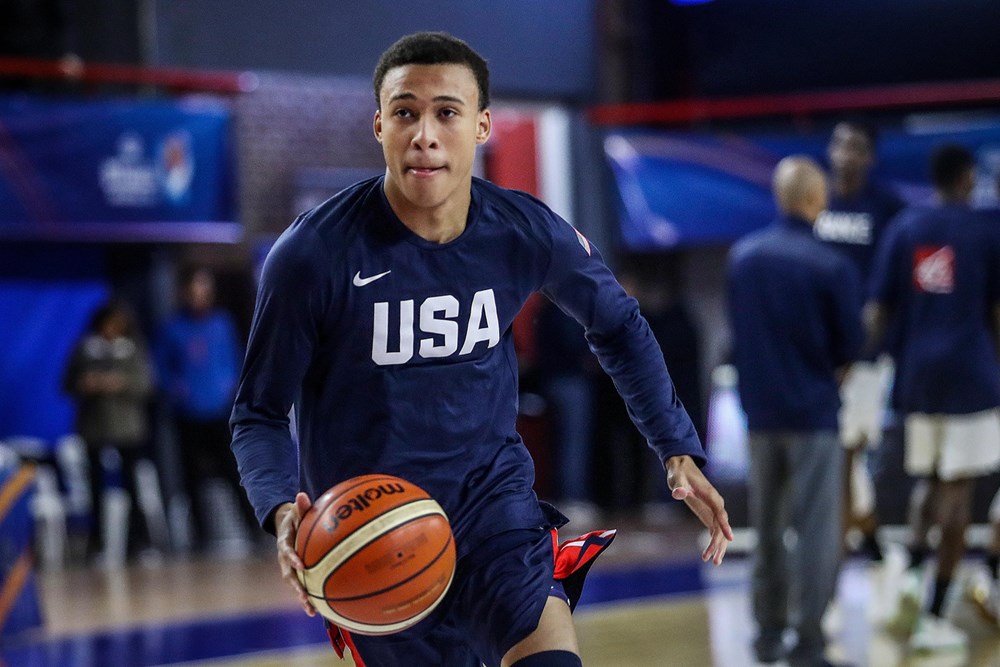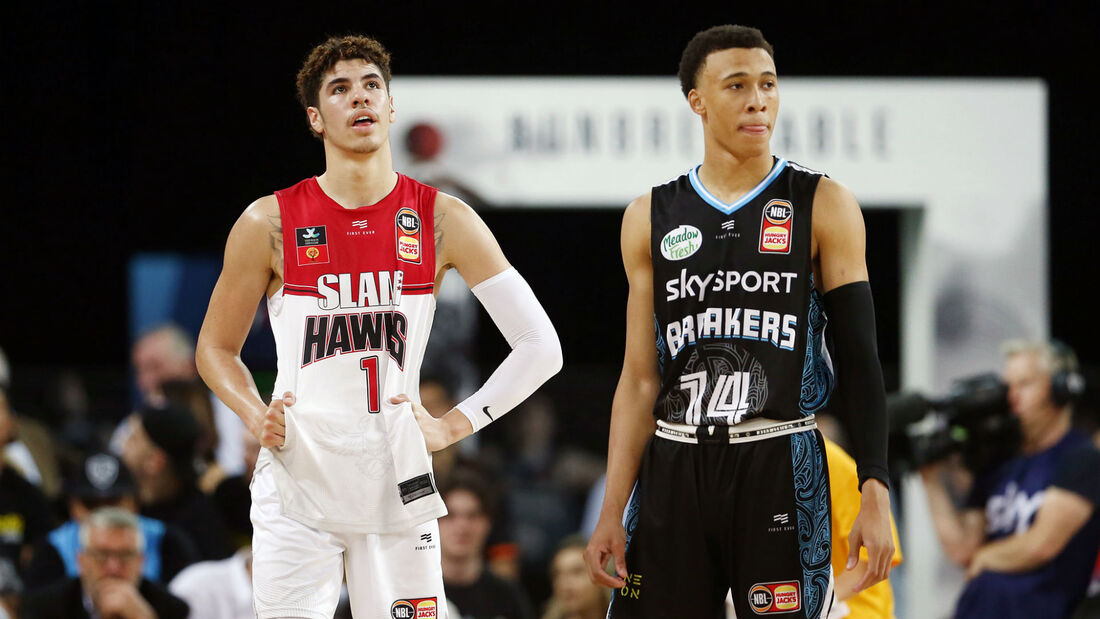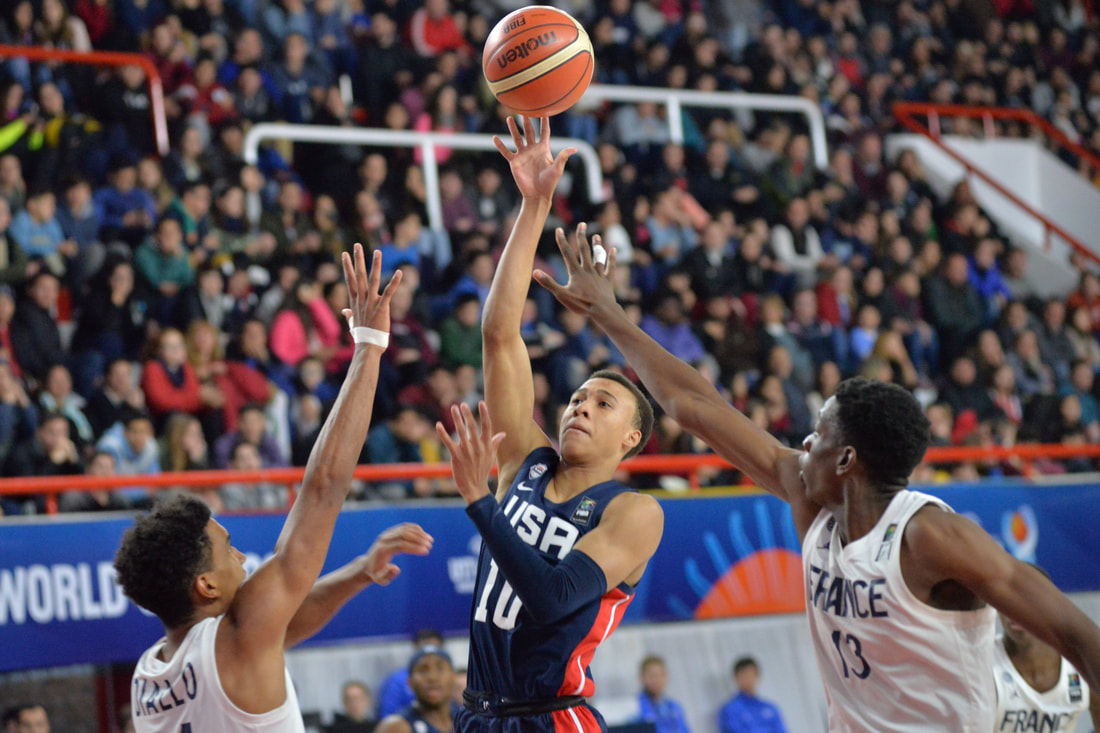|
We all witnessed the Miami Heat making an improbably run through the NBA Playoffs, thanks in large part to the ascent of youngsters Bam Adebayo and Tyler Herro. Out west, the Denver Nuggets made similar strides when Jamal Murray took the leap from good to great. Devin Booker lofted the Phoenix Suns to an 8-0 record inside the bubble. None of the four were expected to play these roles when in college. Adebayo was a pure energy big without predicted ball skills. The other three were shooting specialists and their self-creation has been a surprise to many. A common thread between all four–spending their college years under John Calipari at the University of Kentucky–has led to a common question in draft circles: who is the next Kentucky prospect that will deliver the same loot? The question is, safe to say, a little too narrow. Sure, recent history shows Kentucky guys fit this mold more than others. They play on super-talented teams with multiple professional prospects, forced to sacrifice showcasing some individual skills to make all the pieces mesh on the floor. Shooters, like Booker or Herro, don’t have the ball in their hands, not because they aren’t efficient there, but because it’s not the role their coach needs them to play in order to win. Countless other prospects explode in the pros when freed of the shackles of their collegiate system. Malcolm Brogdon averaged 16 and 7 for the Indiana Pacers this year after playing in Virginia’s massively-restricting offense. Caris LeVert has proven a great late-clock option, something he wasn’t asked to be at Michigan. The question is Kentucky-centric due to our collective understanding of the context prospects find themselves in there, but it’s not unique to just the Wildcats. Enter RJ Hampton. The “out of sight, out of mind” prospect in this year’s crop of lottery hopefuls, Hampton jumped on the trend of elite high school players spurning the collegiate one-and-done system for a year of professional training overseas. He signed with the New Zealand Breakers, a team in the NBL making up teams from Australia and New Zealand, a strong professional league whose level of play compares with upper-to-mid-major college programs. In looking at the draft landscape for this season, much of Hampton's subpar statistical output (and subsequent slide on draft boards) can be explained by the confines of the team he was placed on. Many of those factors echo those guys like Murray, Booker or Herro faced in college. Hampton was asked to sacrifice for the team. The ContextHampton isn’t the first major prospect to travel the international route. Brandon Jennings did years ago, as did Emmanuel Mudiay in 2015 and Terrance Ferguson in 2017. The prestige of college basketball has decreased in the one-and-done era, while the risks for top prospects increase. Guys like James Wiseman lose eligibility while their college coaches skirt meaningful consequences. Cade Cunningham, the consensus top pick in the 2021 draft class, will be ineligible for the NCAA tournament this year at Oklahoma State. The appeal of college basketball is gone for top prospects, which is why the NBA started their pathways program through the G-League. Jalen Green and Jonathan Kuminga, potential top-five picks, spurned elite college programs for the chance to train in the NBA's developmental system. For a guy like Hampton, who never saw himself as a college player and was solely focused on the NBA, the appeal of getting a taste of professional life was both financially rewarding in the short-term and an experience that will likely better prepare him for adult life. Hampton isn't the only American prospect in this draft to head overseas, or even to the NBL. While LaMelo Ball took a more circuitous route, the two ended up as competitors this season. But nothing about their circumstances were really similar. The Breakers were, at season's start, hopeful to be one of the top teams in the NBL. Former NBA swingmen Glen Rice Jr. and Scotty Hopson anchoring the attack. Long-time pro Sek Henry, a strong backcourt scorer, was to supplement that, while former Pelicans G-Leaguer Corey Webster was a readymade point guard for them. They were a true championship contender in their league. The Breakers underwent a tumultuous campaign. First-year head coach Dan Shamir, a long-time coach in Israel, replaced former Georgetown great Kevin Braswell after going only 12-16. A year prior, the Breakers were semifinalists but underwent an overhaul of their roster. Expectations were high, and Hampton was an 18-year-old playing a small role around NBA-level talent. Three games into the season, Glen Rice Jr. had his contract terminated after breaching the conditions on his bail after an assault arrest. Hopson (19.7 points) and Webster (19.5 points) were the two-headed monster, both hitting over 39 percent from 3 and taking the lion's share of possessions with the ball in their hands. Henry and NBL legend Thomas Abercrombie were other strong scorers on the wings, averaging over 12 per game. Hampton was then relegated to essentially sixth man duty. Certainly if he were clearly outstanding, he would have carved out a larger role, but these are all players in their late-20s or older. Hampton wasn't ready to be the man on that type of team with the ball in his hands; few college players would have been. In totality, the Breakers missed the playoffs, finishing 6th. Hampton averaged 8.8 points, 3.3 rebounds and 2.4 assists per game, with per-36 minute averages of 15.4 points, 6.8 rebounds and 4.2 assists. He only took ten or more shots in five games. Hampton's failure was as much to choose a club that presents an advantageous situation to his pro stock as it was with his on-court performance. The player he gets compared with most, naturally, was LaMelo Ball. Ball was rookie of the year in the NBL, getting handed the keys to the offense of the Illawarra Hawks upon arrival. The Hawks were the league's worst team, but Ball got to show his hand as a ball-dominant scorer, driving his draft stock through the roof and towards the top tier of this draft. Ball had only two games where he didn't take ten shots, and three games with over 20 attempts. While Ball shouldn't be punished for the miserable team around him, Hampton shouldn't be chided for failing to crack the lead role with the Breakers. His size, versatility and lack of playmaking polish moved him to more of a wing role, one that his skills don't naturally translate to. He's not a high-level catch-and-shoot prospect, rather a guy who thrives with the ball in his hands. In 2017-18, Bam Adebayo had 33 assists in 38 games. Kentucky's offense wasn't run through him by any means. De'Aaron Fox, Malik Monk and Isaiah Briscoe were the handlers on the floor, all of whom were best with the ball. Fox (24.6 percent from 3) and Briscoe (28.8 percent from 3) left a strangehold on spacing so that if Monk or Adebayo had the ball, the floor would shrink. Fox and Briscoe had to be primary ball handlers, while Adebayo was a screen-and-roll finisher and Monk a floor spacer. That's how the pieces fit together. Adebayo definitely improved from then until now, more remarkably than anyone could have foreseen. But there must have been ways at Kentucky that, if he were used differently, the flashes of this skill would have been on display. They were latent, not nonexistent. The same can be said of Hampton in his time with the Breakers. Not being used in an on-ball role speaks more to New Zealand's core (Hopson and Webster) than it does to the type of player Hampton is. The difference is that guys like Adebayo, or Herro, or Booker, they are placed in a role that's advantageous for their development and keeps their draft stock high. Hampton never received such a luxury. The EvaluationBefore diving into how Hampton played halfway across the world, let's visit the discussion on him before he departed. Growing up in Texas, Hampton originally verbally committed to Kansas to play under Bill Self. ESPN ranked him as the 5th best recruit in the class of 2019, as did 24-7 Sports. This came after Hampton, originally due to graduate in 2020, reclassified to '19, chose to forego his senior season and signed with an agent. Hampton was supposed to be a high school senior last year. His last year in high school (his junior season), Hampton averaged 32 points, 9.7 rebounds and 6.4 assists. Playing with Mudiay Elite on the AAU circuit, Hampton put up 24.6 points, 4.6 rebounds and 6.0 assists, not too far a drop-off from his high school numbers. Playing on the Under Armour circuit, Hampton bested top recruits like Nico Mannion (West Coast Elite) and garnered a ton of national attention. He was the offensive focal point of his team and was seen as a big point guard, not an athlete or a wing. For the last four years, Hampton has been a member of the USA Basketball elite squads, playing in international competitions and joining the squad for training camps. He's always been one of the more impressive athletes there and received stellar reviews and praises for his performance in 2018, which helped lead to his reclassifying. The kid was fast-tracked due to his athleticism. In one of the earliest iterations of the 2020 NBA Mock Drafts and Big Boards, ESPN's Mike Schmitz put Hampton sixth on his list. For Hampton to go from there before his season in New Zealand all the way down to 14th means something had to go wrong. The circumstances dictated a lot, but if you splice the footage of Hampton, he really wasn't bad by any means. He looked, more than anything, uncertain and unpolished. When the ball was in his hands and it was time to just be a better player than his opponent, he thrived. When he got transition opportunities or the ball against switches or in the spread pick-and-roll, he looked great. Those moments were just hard to come by. On top of being a great athlete, Hampton has the potential to be a really good defender at multiple backcourt spots. Remember, he should have just finished his senior season in high school. Expecting him to be a polished off-ball defender, especially in a professional league, is a bit far-fetched. But he knows how to use his athleticism on-ball and in passing lanes, starting fast breaks with his pressure and getting himself to his strengths in the open floor. Throughout the season, Hampton showed great deals of improvement defensively, to the point where he put the clamps on LaMelo in their meeting and outplayed his counterpart on that end. The two areas of Hampton's game most in need of refinement were on display in New Zealand: his shooting and his passing. Let's discuss the passing first. Hampton wasn't put in enough spread pick-and-roll situations to really dissect or discredit his play in New Zealand. It's an improvement that remains such because we didn't get to see him improve there overseas. For every read he'll miss out of ball screens, he'll make a pretty controlled and instinctual decision in the open floor. For polarizing prospects, oftentimes one game will stand out above the rest and stick in my head for how a player performed. For Tre Jones of Duke, its the 2019 NCAA Tournament game against UCF where he was guarded by Tacko Fall and couldn't hit a shot. For Devin Vassell, it was his game at Duke where he was outrageously good as a help defender. Anthony Edwards in the Maui Invitational against Michigan State. The list goes on. For Hampton, that game was actually an exhibition in the pre-season against the Oklahoma City Thunder. Hampton, who should have been in Calculus at the time, was starting in Chesapeake Energy Arena and guarding Chris Paul from the jump. Hampton wasn't stellar in the game; in fact, he didn't score very much or showcase elite level of skill. But he looked like he belonged, showed flashes of that great athleticism he's touted and, most impressively, made some really good reads and passes. The weakness in his game looked like his best attribute that night. The exhibition game actually served as a precursor for what was to come later that season: missing bunnies at the rim. Hampton didn't finish at a high level despite getting there with ease and seeing opportunities within five feet of the rim. He has unique takeoff points because he's so athletic and doesn't seem to have found balance with his gather yet, but these aren't as worrisome of shortcomings in my eyes. In order for Hampton to get better at making finishes and passes out of the pick and roll, he needs reps. He didn't get it a lot with the Breakers, which is detrimental to his development. Against the Thunder that night in October, he faced opponents going under ball screens, daring him to shoot and clogging the lane to take away the ease of his finishes. Everything circles back to the shooting. The reason Hampton's name has been rising on many draft boards is due to his work with former NBA Champion Mike Miller. Miller, a career 3-point specialist and current coach at University of Memphis, is known as the "shooting whisperer". He's been quite vocal about how much Hampton has improved and the legitimate, long-term changes being sustainable. Always be cautious with pre-draft workouts, videos and the talk from a prospect's camp. Most of what you hear is smoke and mirrors. The burden lies on Hampton to correct his form enough and demonstrate its tweaks within workout settings to prove this can be a facet of his game. 29 percent, which he shot with the Breakers, won't cut it. With the ball in his hands, an improved dribble jumper forces defenses to come out to guard him. That means more room to attack the hoop. More space to finish (and, in theory, a higher percentage at the rim). Easier kickouts to teammates on the perimeter. Shooting really is the swing skill; his mid-range is fine when he slows down enough to get his feet beneath him, but he must extend that range to the 3-point line. Closing ArgumentsHampton is, in my book, a top-ten prospect and is knocking on the door of the top five. The bonuses of what you can't teach (athleticism and burst, creativity in the open floor, relentless attacking of the rim, length on defense) are appealing in a class without top-end talent. What can be taught and improved (improved changing of speeds in the half-court, PNR reads without pre-determining plays, jump shot range) is closer to being acceptable than many might realize.
Scouts get really good at digging to the bottom of guys, assessing character and understanding the confines of their prior circumstances. But I've yet to figure out a fool-proof way scouts can evaluate what they cannot see. Just because something isn't visible doesn't necessarily mean it isn't there. Hampton's evaluation follows the same trajectory. He was not an efficient alpha male with the Breakers for reasons we've clearly outlined above. He was not an efficient role player as he struggled to acclimate to the supporting role he was handed. But the ability to become an efficient alpha can't ever be realized until someone is given the chance to prove they're an alpha. That was a chance Hampton never got. Most NBA prospects go from do-it-all in college to finding their specific role or niche at the next level. But there are plenty who experience the inverse. Based on the circumstances of his time with the Breakers, his high school scoring prowess and the strides already made on his jump shot, Hampton is more likely to experience a major leap than he’s given credit for.
0 Comments
Leave a Reply. |
AuthorAdam Spinella is a Division III basketball coach using what he's learned about scouting and skill development and applying it to the NBA Draft Archives
November 2020
Categories |



 RSS Feed
RSS Feed
